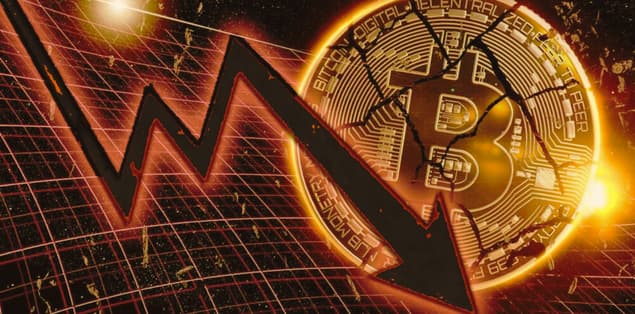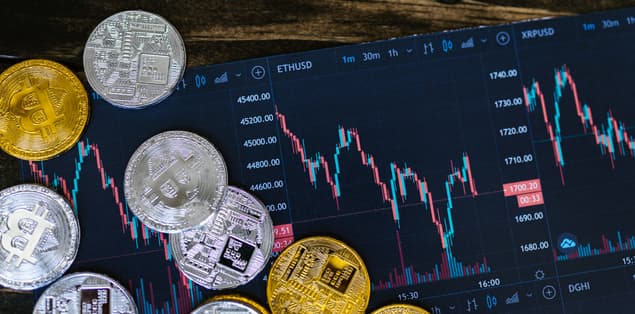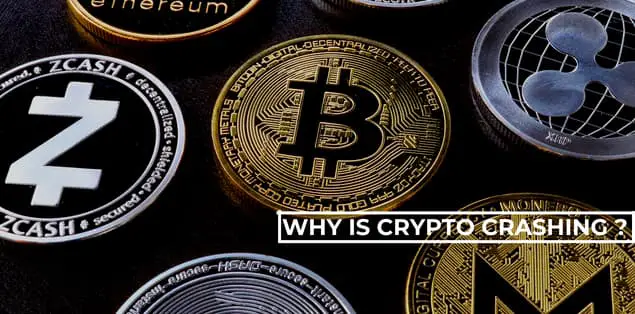An unprecedented sell-off in the crypto market has begun, sending investors into a tailspin and prompting them to wonder why the cryptocurrency market has become so susceptible to stock market fluctuations.
Stablecoins (such as Luna), in particular, are drawing attention. Stablecoins, as the name indicates, are digital assets whose value is equitable to a stable asset like the U.S. dollar or a precious metal like gold. Hence, they are relatively immune to price swings.
Even the so-called “stable coins” have seen their value plummet. The latest incident of the $40 billion collapse of cryptocurrency Luna has shocked the crypto market. We don’t know what’s going on. So what is the future of the cryptocurrency market? We spoke with financial and investing specialists to get a comprehensive picture.
So, without any further ado, let’s jump right into it!
Why Is Crypto Crashing Right Now?

The cryptocurrency market looks to be collapsing, or at the very least going through a significant correction, as Bitcoin (BTC) dropped below $33,000 for the first time in about 12 months. This week, Ethereum (ETH) and Cardano (ADA) also tumbled, adding to the downward momentum.
In light of the age-old financial maxim “buy the dip,” investors are now searching for a way to get a piece of the volatile cryptocurrency market. They’re doing so with the expectation that the current drop is just temporary rather than the beginning of a long-term bear market.
Today’s price of one bitcoin is over $22,000, a decrease of more than 26 percent compared to one month ago. In November 2021, it was selling for as much as $69,000 at one point. A decline that is more than fifty percent indicates severe losses.
ETH had losses during the last month compared to those of Bitcoin, dropping to a price of around $2,400. Cardano (ADA) faced even worse losses, dropping nearly a third (32 percent) to $0.69.
Even if this has not yet reached the severity of the fall that Bitcoin saw in 2018, in which it lost 80 percent of its value, industry analysts believe that things might become worse for those who still own BTC.
Because of losses of this kind, the United Kingdom’s financial regulator, the Financial Conduct Authority (FCA), has issued repeated warnings to anyone who has invested in cryptocurrencies. It states that there are no assurances of profits and that individuals should prepare to give up all they have invested in avoiding financial hardship.
6 Reasons Why Crypto Is Crashing

Below are 6 primary reasons why the crypto market is crashing right now.
Investors in Cryptocurrencies Are Using an Excessive Amount of Leverage
At the beginning of January, the BTC leverage ratio tracked by the cryptocurrency analytics company CryptoQuant reached an all-time high. This indicated that more investors were taking on risks in the cryptocurrency industry.
To fund their purchases of futures contracts, crypto investors often rely on loans, just as they do in conventional markets. Instead, miners can use this strategy to protect themselves from any price declines in the cryptocurrencies they mine.
According to Simon Peters, senior account manager at eToro, the quantities of leverage now being used in the cryptocurrency market “may indicate turmoil in the short future.” According to Peters, “price drops might prompt liquidation of long-term investments,” which is true across all asset classes.
Then, prices may drop much more when prices continue to decline, and futures traders begin liquidating their holdings. It is a cycle comparable to what took place in the stock market in 1929 and 2008. However, collapses are hazardous for markets with little liquidity, such as the cryptocurrency market.
There is a Liquidity Problem in the Crypto Market
When leveraged investors sell off a significant percentage of their holdings, the most significant challenge for the cryptocurrency markets is the general reduction in the number of liquid assets available on the market.
In contrast to the stock market, there are not usually many customers waiting in line to purchase unloaded coins. Crashing in the cryptocurrency market is more likely to occur on weekends for this reason, among other reasons.
When investors sell many coins, fewer investors are tuned in to make purchases. Narayanan explains, “This is why large institutions cannot deal in low-value currencies. They ultimately cause disruptions in the market.” For instance, a whale is a kind of investor that maintains a substantial stake in a certain asset. When a whale sells significant sums of cryptocurrency, it has the potential to flood the market.
The coins then sell on the secondary market, where there is a surplus of supply but only a limited demand.
Cryptocurrency Regulations
“Miners had no choice but to relocate to other countries that were more miner-friendly when China issued its ban on cryptocurrency mining in June of 2021,” adds Peters. The news that “we witnessed a large reduction in the network hash rate” has serious repercussions for investors in cryptocurrencies. In cryptocurrency, we refer to the number of computations it may carry out in one second as a hash rate.
The outcome of these computations determines the price of a currency. It enables miners to generate the coins they are mining in the first place. The hash rate goes down if the cost of bitcoin falls. People have hypothesized that the converse is also true in certain circumstances.
Most of the time, this is because mining platforms pay miners in bitcoin. On the other hand, this also suggests that the general price of cryptocurrencies may go down if governments implement rules that make mining more difficult.
Breaches in Cryptocurrency Security Are Causing Panic
According to Peters, blockchain technology and network security are two other elements that might bring a meltdown in the cryptocurrency market. A collapse of this nature would play out in a manner not dissimilar to how regulatory disruptions caused by government actors do. For instance, if investors discovered that Bitcoin included a security hole, this would reduce the incentive to mine Bitcoin, which might have repercussions for both the hash rate and the price as a whole.
According to Narayanan, “this is a whole new asset class.” However, researchers have estimated that there will never be more than a certain number of bitcoin in circulation. And in contrast to equities, which real assets underpin, the value of the vast majority of cryptocurrencies is driven almost entirely by the mood of investors.
Dan Kemp, global chief investment officer at Morningstar Investment Management, says, “For investors who want to hold crypto, the problem is identifying those coins with a limited supply and a long-term following.”
Influencers in the Cryptocurrency Space Are Also Driving Price Swings
According to Peters, investors in cryptocurrencies need to remember that “crypto enthusiasts and major influencers may tweet and induce an influx of cash.” This is important to keep in mind in terms of mood. It is quite clear that we have seen this happen with Elon Musk’s sponsorship of Dogecoin.
Tweeting has the potential to produce the reverse of the intended impact. This is because the worth of this type of asset depends on how investors feel and because the crypto market isn’t very liquid. Stablecoins provide an opportunity for investors as a potential solution to this issue.
Traders that utilize this form of currency can quickly enter and exit other crypto positions in response to changes in the market.
There Are Several Links Between Cryptocurrency and Stock Markets
One of the many attractive features of crypto is its potential to be an uncorrelated asset. In other words, it ought to be untethered from the rest of the market and allowed to float freely. But the year 2022 shows that this isn’t always true.
“Due to increased conventional acceptance over several years, crypto markets have grown increasingly linked with traditional markets. In the opinion of certain individuals, there is a strong connection between cryptocurrency and the stock market, “according to Peters.
Crypto, which was once assumed to be the world’s most powerful proxy against growth and inflation, is becoming much more connected to public markets than its early investors thought it would be.
It does not need to go any farther than the cryptocurrency market’s tremendous loss of 45.3% year to date through May 12 compared to the S&P 500’s decline of 17.5%. However, the fact that this drop coincides with an increase in interest rates does not help argue that the two events are uncorrelated.
However, as Narayanan points out, “Crypto collapses are an inevitable element of investing in cryptocurrency.” The most important questions for investors are related to the period they want to keep their digital assets and their capacity to withstand market volatility.
Has The Crypto Market Crashed Before?
Seeing huge profits and losses in their portfolios is nothing new to people working in crypto for many years. For instance, the price of bitcoin reached a prior all-time high of about $20,000 in December 2017, but by December 2018, it had dropped to a price of $3,500.
The up and down fluctuations in Bitcoin’s price may be astonishing as the cryptocurrency attracts more users. According to Greg King, founder and CEO of Osprey Funds, an investment company specializing in digital assets, “taking the long-term approach puts these swings in perspective by putting them in the proper context.”
Previous price decreases have been greeted with relief by experienced investors. But, Danial says, “then, you will perceive the reduction of Bitcoin value as a chance to acquire.”
Read Also: Why Is Gas So Expensive?
Final Words
Is the cryptocurrency market going to have a Lehman moment? (Lehman Brothers was a significant investment bank that collapsed in 2008 and was a protagonist in the global financial crisis).
“Not yet. Especially in cryptocurrency, you can never say never again,” Moya from OANDA remarked. “Even with the possibility of triggers, it does not seem that there is a consistent danger.”
Franzen believes that a significant increase in the price of bitcoin might be a leading indicator of an increase in inflation, similar to what occurred between March 2020 and November 2021.
This was a complete guide on why the crypto market is crashing.
